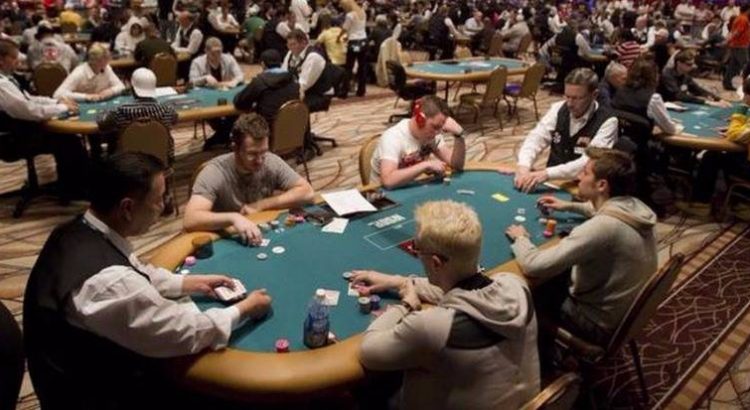A listed odd with a + sign in front of it, such as the +120 in our example above, shows us how much money you would win on a $100 bet. Using the +120 odds, it shows us that a $100 bet on that outcome would pay out $120 in profits. Again this can easily be converted into smaller or larger size bets. The over/under betting odds, or the totals, work differently for each sport. If the number is 42 in a football game and you bet the over, you would need 43 points total between the two teams. In baseball betting, it is the number of runs scored that sets the total. The UFC over/under betting odds are which round the fight will end.
- How To Read Gambling Odds
- Understanding Bet Odds
- Understanding Betting Lines
- Betting Odds Explained - A Beginner's Guide To Gambling
- Betting odds tell you how likely an event is to happen
- They also tell you how much money you will win
- However, at first, they may seem confusing and complex
- Our comprehensive guide takes you step-by-step to explain them
If you’re new to betting, one of the first things you should do is learn how betting odds work. It’s critically important because it allows you to understand how likely an event is to happen, and what your potential winnings will be. At first, it may appear confusing, however, read our guide and let us explain it to you.
In gambling, odds represent the ratio between the amounts staked by parties to a wager or bet. Thus, odds of 3 to 1 mean the first party (the bookmaker) stakes three times the amount staked by the second party (the bettor).
What is Probability?
The most basic level, betting provides you with the ability to predict the outcome of a certain event, and if your prediction is correct, you will win money. For any given event, there are a certain number of outcomes. Take rolling a dice for instance. If someone rolls a dice, there are six possible outcomes. Therefore, if you bet that the person rolls a ‘one’, there is a 16.67% chance that will happen. What betting odds merely do is present how likely the event is to happen. Bookies most frequently in the UK do this as a fraction, i.e. 4/7, whilst the vast majority also offer the ability to view them as decimals. Again, let us talk you through them. All will become clear.
Using Betting Odds to Calculate Probability
Whenever you see two numbers separated by a trailing slash, i.e. 10/1, this is known as fractional odds. From this, you can calculate how likely a given event is to happen with a calculation. For ease of explanation, let’s replace the numbers with letters i.e. 4/1 becomes A/B. Here is the calculation: Probability (%) = B / (A+B).
How To Read Gambling Odds


- 9/1 can be calculated as 1 / (9 + 1) = 0.10– There is a 10% chance that the event will happen.
- 4/1 can be calculated as 1 / (4 + 1) = 0.20 – There is a 20% chance that the event will happen.
- 1/1 can be calculated as 1 / (1 + 1) = 0.50 – There is a 50% chance that the event will happen.
- 1/4 can be calculated as 4 / (4 + 1) = 0.80 – There is a 80% chance that the event will happen.
Hooray! We’re making progress. Given a fraction, we can now tell how likely (the probability) what we’re going to bet on will happen. Now let’s figure out how much money can be won using betting odds.
Using Betting Odds to Calculate Winnings
Betting odds allow you to calculate how much money you will win if you make a bet. Let’s use the same examples as before, with the same replacement of numbers for letters, i.e. 4/1 becomes A/B. Quite simply, for every value of B that you bet, you will win A, plus the return of your stake.
- 9/1 for every £1 you bet, you will win £9.
- 4/1 for every £1 you bet, you will win £4.
- 1/1 for every £1 you bet, you will win £1.
- 1/4 for every £4 you bet, you will win £1.
What About Decimals?
Decimals are far more common on exchanges, such as Betfair, but all leading betting sites do give you the option to view betting odds in this format. They are an alternative to seeing betting odds in the fraction format, and in our opinion, are easier to work out. Here is the calculation: winnings = (odds * stake) – stake. Let’s illustrate it with some examples
- 9.0 can be calculated as (9.0 * £10 stake) – £10 stake = £80 winnings.
- 4.0 can be calculated as (4.0 * £10 stake) – £10 stake = £30 winnings.
- 2.5 can be calculated as (2.5 * £10 stake) – £10 stake = £15 winnings.
- 1.25 can be calculated as (1.25 * £10 stake) – £10 stake =£2.50 winnings.
You can use our bet calculator to help you calculate winnings.
USE BET CALCULATOR


Decimal Odds Versus Fractional Odds
In truth, one isn’t better than the other but there is certainly a trend emerging towards decimal odds. Historically fractional odds were used in the UK, especially on racetracks and on the high street. There are two key differences. Generally, decimal odds are easier to understand. Based on this, there has a movement to attract more people to horse racing by making it more accessible to the average punter. Ten years ago, if you were going to Cheltenham, all the odds would be displayed as fractional odds. Now, they’re largely all in decimals. Don’t hesitate to check out our exclusive Premier League Betting Offers !
The second difference between the formats is that fractional odds only represent winnings, and do not include the returned stake compared to decimals which do include the stake. The transition from fractional odds to decimals largely kicked off with the growing popularity of the betting exchanges such Betfair. For odds to change slightly, it’s really difficult to marginally increase or decrease the probability without creating large fractions which are hard to compute for the punter.
Use Our Tool to Convert Betting Odds Into Your Favourite Format
Our odds converter toolwill allow you see odds in whatever format you like . Not only that, but it’ll tell you how likely the selection is to win!
Understanding Bet Odds
In Summary
Betting odds represent the probability of an event to happen and therefore enable you to work out how much money you will win if your bet wins. As an example, with odds of 4/1, for every £1 you bet, you will win £4. There is a 20% chance of this happening, calculated by 1 / (4 + 1) = 0.20.
Understanding Betting Lines
Next steps
Betting Odds Explained - A Beginner's Guide To Gambling
That’s it! Hopefully, that clears up betting odds. You should now have the knowledge to read betting odds, understand how likely it is to happen, and how much you stand to win.
- Found this article useful? We have loads more similar ones in our learning section. Here are some popular ones;
- Our homepage lists all available betting sites for new customers.